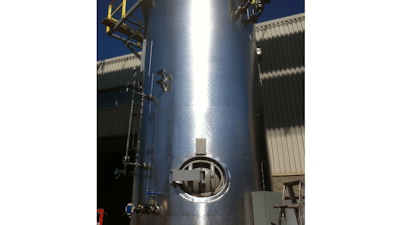
For EU and U.S. industry, process heating and steam production are significant sources of energy use, and at many industrial sites boilers can account for up to 60% of energy costs. Process heating is usually from steam, which is used to increase the temperature in a process vessel.
Due to the threat of global warming as well as international commitments to the Paris Accord on Climate Change, industrial processors in Europe and North America are tasked with significantly reducing their environmental footprint in record time.
While the interest of industry in electric boilers for process heating and steam production has waxed and waned in the last century, suddenly it is in vogue again.
Whether to honor Environmental Social and Governance (ESG) goals, meet regulatory commitments or take advantage of government credits and incentives, a growing number of industrial facilities are installing new or retrofit high-voltage electrode boilers that are compact, economical and produce no emissions.
This is due to technological advances in electric boiler design that increase the output to a level that rivals even large gas or oil-fired boilers. When process heating is used to raise process vessel temperature, electric-powered alternatives are sure to be a critical piece of the puzzle in meeting future emission reduction goals.
 High Voltage Electrode Steam BoilerAcme Engineering
High Voltage Electrode Steam BoilerAcme Engineering
Transitioning from High-Emission Gas and Oil-Fired Boilers
In industrial processing, besides the greenhouse gasses carbon dioxide (CO2) and methane (CH4), natural gas-fired boilers and furnaces emit dangerous nitrogen oxides (NOx), carbon monoxide (CO) and nitrous oxide (N2O), as well as volatile organic compounds (VOCs), sulfur dioxide (SO2) and particulate matter (PM).
However, many industrial process engineers familiar with gas-fired boilers mistakenly believe that electric boilers cannot match the output of the traditional, fossil fuel burning units.
Due to considerable advances in electric boiler technology, that is far from the case. Today, such technology can match the capacity of large gas or oil-fired boilers in a much smaller footprint.
Electric boilers utilize the conductive and resistive properties of water to carry electric current and generate steam. An A.C. current flows from an electrode of one phase to ground using the water as a conductor.
Since chemicals in the water provide conductivity, the current flow generates heat directly in the water itself. The more current (amps) that flows, the more heat (BTUs) is generated, and the more steam produced.
Crucially, almost 100% of the electrical energy is converted into heat with no stack or heat transfer losses.
As an example, the electrodes of a high voltage electrode steam boiler are vertically mounted around the inside of the pressure vessel. This enables the unit to produce maximum amounts of steam in a minimum amount of floor space with boiler capacity from 6MW to 52MW.
The boiler operates at existing distribution voltages, 4.16 to 25 KV with up to 99.9% efficiency and can produce up to 170,000 pounds of steam per hour.
With pressure ratings from 105 psig to 500 psig, the boilers are designed to ASME Section 1 and are certified, registered pressure vessels at the location of the boiler.
High-capacity electric boilers are well suited to heat process water. The electric boilers have several advantages compared to oil or gas-fired boilers, including superior safety, ease of installation, faster start-up and shut down time and quiet operation.
Electric boilers do not have a high minimum operating level to make them immediately available.
Electric boilers do not need an operator because if anything goes wrong, the breaker trips, preventing further escalation of the issue. With gas burning boilers, however, any gas leak can increase the risk of an explosion.
So, gas units must usually be continually monitored or periodically inspected. State and municipal safety guidelines vary depending on boiler type and the expected frequency of inspection.
With electric boilers, the energy input as well as adjustment is also precise and virtually immediate. In contrast, increasing or decreasing the temperature in a gas fired boiler is a slower process because it takes time for the heat in the boiler to rise or dissipate before reaching the targeted output.
The electric units are also exceptionally quiet compared to fuel fired boilers. Unlike gas-powered burners that throttle like turbine engines almost continually, electric boilers keep operational noise levels down.
As the EU and U.S. resolve to dramatically cut their greenhouse gases to combat climate change, the urgency for industry to similarly reduce their carbon emissions for process heating will only grow.
In this battle to protect the environment before the global climate hits an irreversible tipping point, industry along with government must do their part.
Fortunately, advanced, zero-emission electric boiler technology can be a readily implementable part of the solution.
---
Robert Presser, Vice President of Acme Engineering Prod., Inc.























